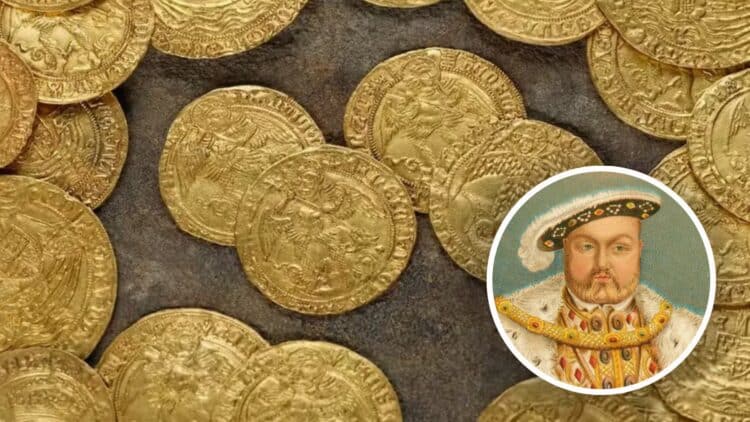What initially started as a morning of gardening to cope with the endless amount of free time that the lockdown left us back in 2019 ended up becoming a key find in the history of the United Kingdom. This story happened to a family in the coastal town of Milford on Sea, in Hampshire County, when the homeowner found a lump in the clay. After cleaning it with his son, he could not believe his eyes: it was gold coins minted during the reign of Henry VIII, some of them bearing the initials of his first wife, Catherine of Aragon, and his third wife, Jane Seymour.
The family did not hesitate to act responsibly and went directly to the British Museum, registering the find with the Portable Antiquities Scheme. The discovery included 70 coins, which have turned out to be one of the best-preserved batches of Tudor coins. The historical period to which this discovery takes us situates us in the English Reformation, in the midst of Henry VIII’s crusade against papal authority, so it is believed that it could have been buried by a clergyman or landowner connected to the old order.
The collection includes more pieces ranging from the reign of Henry VI to the last decades of the 16th century. The collection will be auctioned in Switzerland with a minimum estimate of 230,000 pounds, although it is expected to exceed that figure significantly.
Royal find
Imagine spending a morning with your family doing gardening chores and suddenly making one of the most significant discoveries for English archaeology and the British monarchy. This is what happened to a family from the coastal town of Milford on Sea, in Hampshire, after finding a lump of clay while adjusting a fence. After cleaning it, they realized that what they had in their hands was gold.
But it wasn’t just any gold; it consisted of coins minted during the time of Henry VIII, some even marked with the initials of his wives. Initially, the family contacted the British Museum and also registered the find with the Portable Antiquities Scheme, the official body responsible for documenting casual archaeological discoveries in England and Wales.
Historical moment of the coins
Understanding the value of these coins requires us to travel back in time to the turbulent era of the English Reformation, specifically when Henry VIII, the monarch who broke with the Church of Rome and forever transformed the political and religious landscape of the kingdom, reigned. Many of the pieces date from 1530, when the monarch proclaimed his religious supremacy over England, dissolved the monasteries, and confiscated their wealth. Their value is equivalent to 26 pounds sterling of the time, which could buy a house. It is believed that they could have been the fortune of a cleric or landowner associated with the old order, who buried their assets out of fear of reprisals, expropriations, or looting.
Tudor coins
The initial discovery included 63 gold coins and one silver coin, but six more were later found in the same garden thanks to the work of archaeologists. According to specialists, it is one of the best-preserved batches ever found. The most characteristic and revealing aspect of the discovery is that some of the coins had inscriptions of the names of Henry VIII’s first and third wives: Catherine of Aragon and Jane Seymour.
What will happen with the coins?
After being analyzed and studied, the coins could not be acquired by any British museum, so they were returned to the discoverers. However, they are currently going to Switzerland to be auctioned with a minimum valuation of £230,000, although it is expected to far exceed that amount.
